10 Plank Variations That Get Results for Every Fitness Level
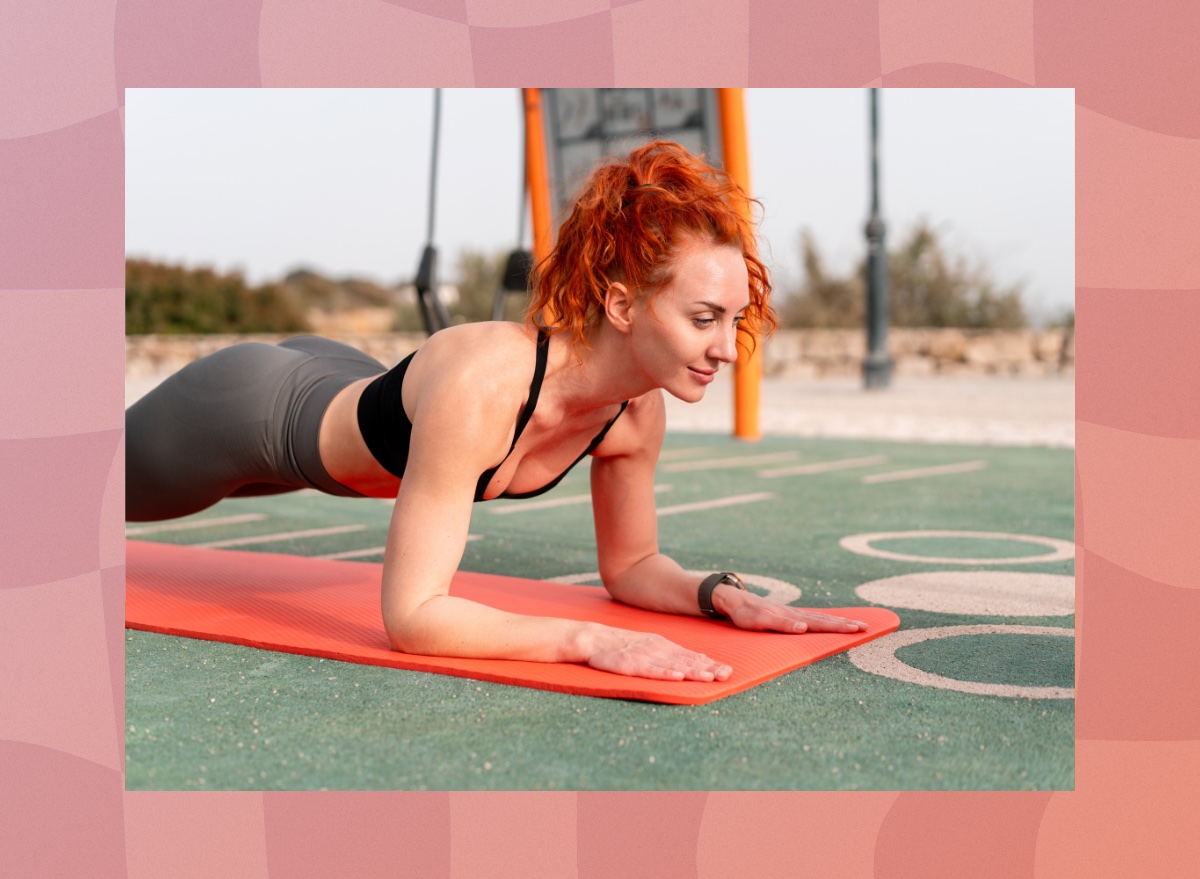
Planks are the unsung heroes of bodyweight exercises. They offer a versatile way to target your core, improve your posture, and boost overall stability. Whether you're a fitness newbie or a seasoned pro, the right plank variations will push your limits and transform your midsection.
Planks are not just about building a six-pack; they're about creating a strong, stable foundation that supports all your movements, whether you're lifting weights, running, or just going about your daily activities. They engage multiple muscle groups, including your shoulders, back, glutes, and even your legs, making them a true full-body exercise. You can do them anywhere, anytime, without any equipment—perfect for fitting into any busy schedule.
Ready to elevate your plank game? Continue reading to explore 10 of the best plank variations that cater to every fitness level, from beginners to advanced. No matter where you are on your fitness journey, these variations are designed to challenge you and deliver results.
Why Planks are a Beneficial Bodyweight Exercise
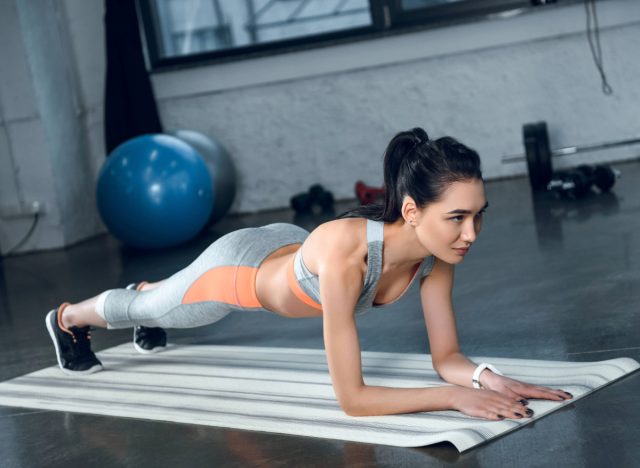
Planks are a powerful option for core workouts. They engage multiple muscle groups, including the rectus abdominis, transverse abdominis, obliques, and even the lower back and glutes. This engagement helps sculpt your midsection and improves functional strength, which is crucial for everyday movements and athletic performance. Unlike crunches and sit-ups, planks put less strain on your spine and can help alleviate lower back pain by enhancing overall core stability.
Planks improve your posture by strengthening the muscles that support your spine. A strong core means a better alignment of your spine, which can reduce the risk of back injuries and pain. Planks also boost your balance and coordination, which are essential for athletic performance and daily activities.
The best part? You can modify planks in numerous ways, and they can be adjusted to match any fitness level, making them an inclusive and adaptable exercise for everyone and catering to any goal.
How to Choose the Right Plank Variation for You
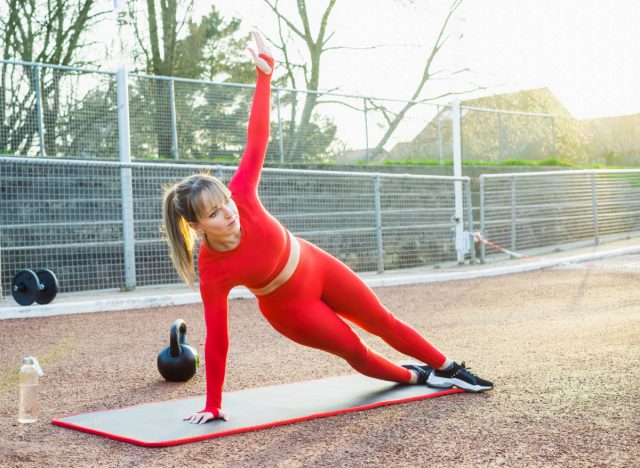
Selecting the perfect plank variation depends on your current fitness level, goals, and physical limitations. Beginners should start with simpler versions to build foundational strength, while intermediates can introduce added challenges like weights or dynamic movements. Advanced fitness enthusiasts should aim for variations that require more balance, strength, and coordination.
It's essential to listen to your body and progress gradually to avoid injury and maximize benefits. Start with a challenging but doable variation, and once you can hold it with good form for the recommended duration, move on to the next level. Remember, the goal is to keep the position, engage your muscles actively, and maintain proper alignment throughout the exercise. Consulting with a fitness professional can also provide personalized guidance and ensure you perform the exercises correctly.
10 Different Plank Variations and What Fitness Level Each is Most Beneficial For
Now for the good stuff. Whether you're just starting your fitness journey or looking to add a new challenge to your routine, there's a plank variation for you. Planks are versatile exercises that can be modified to suit any fitness level, helping you build strength, stability, and endurance in your core.
Below, I've broken down ten effective plank variations, organized by beginner, intermediate, and advanced levels, to ensure you find the perfect fit for your workout goals.
Beginners
Are you new to working out? These variations will help you build a solid foundation, targeting your core while improving overall stability and strength. They are perfect for those new to planks or strengthening their core before progressing to more challenging exercises.
Variation #1: Standard Plank
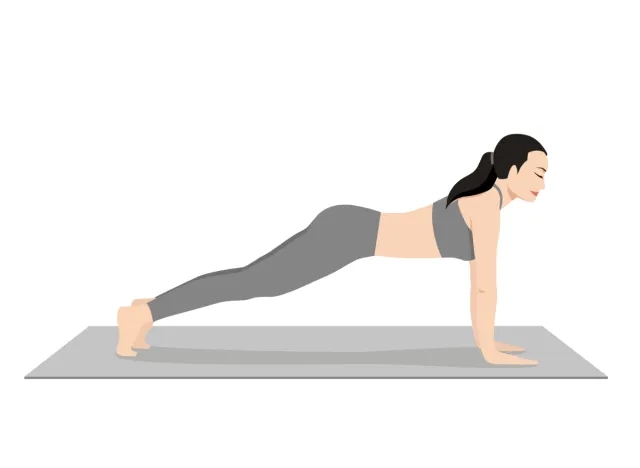
The standard plank primarily targets the rectus abdominis, transverse abdominis, and obliques. It also engages the shoulders, chest, and quads for a full-body workout. This foundational exercise builds core stability, improves posture, and sets the stage for more advanced variations.
To perform a standard plank, start on all fours, with your hands directly under your shoulders and your knees under your hips. Step your feet back one at a time, creating a straight line from your head to your heels. Engage your core, keeping your hips level and avoiding sagging or arching your back.
Perform three sets of 20 to 30-second holds, gradually increasing the time as you build strength.
Variation #2: Side Plank
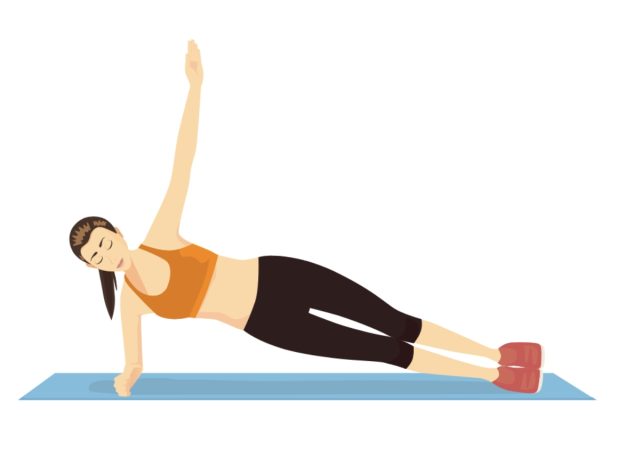
The side plank targets the obliques, glutes, hips, and shoulders. It enhances lateral core stability and strength, which are crucial for balance and rotational movements.
To perform a side plank, lie on your side with your legs extended and stacked on top of each other. Prop yourself up on your elbow, ensuring your shoulder is directly above it. Lift your hips off the ground, forming a straight line from your head to your feet.
Complete three sets of 20 to 30-second holds on each side, focusing on maintaining a straight body line.
Variation #3: Plank with Shoulder Taps
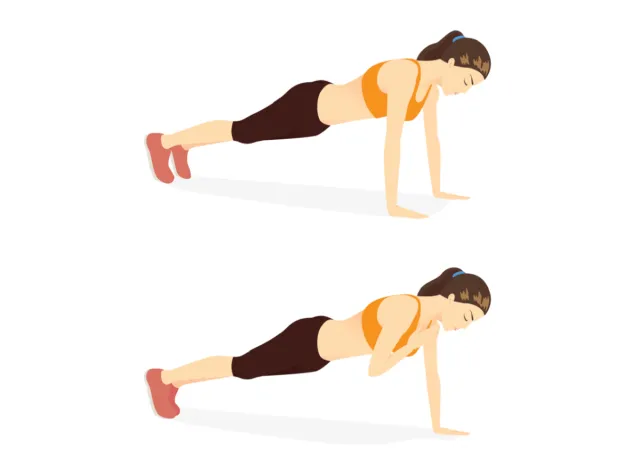
This variation engages the core, emphasizing the obliques and shoulders, and challenges balance. It adds an element of instability, promoting greater core engagement and shoulder stability.
To perform a plank with shoulder taps, begin in a standard plank position. Lift your right hand to tap your left shoulder without shifting your hips. Return your hand to the floor and repeat on the other side.
Complete three sets of 10 to 20 taps per side, keeping your core tight and hips stable.
Intermediates
Ready to take it up a notch? These intermediate variations introduce new challenges that require additional strength and stability. They are perfect for those who have mastered the basics and want to further develop their core muscles and overall fitness.
Variation #4: Weighted Plank
The weighted plank intensifies engagement of the entire core, especially the rectus abdominis and transverse abdominis. Adding resistance increases muscle strength and endurance.
To perform a weighted plank, assume a standard plank position. Have a partner place a weight plate on your lower back, or use a weighted vest.
Perform three sets of 30 to 45-second holds.
Variation #5: Side Plank with Hip Dips
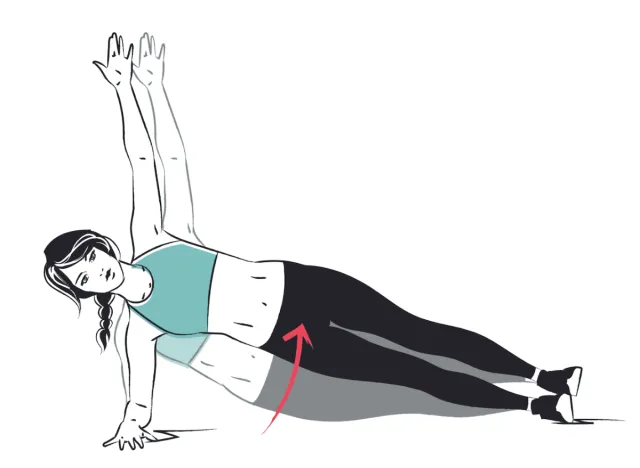
The side plank with hip dips targets the obliques, glutes, and hip abductors. This dynamic movement challenges the core, improving strength and stability.
To perform a side plank with hip dips, start in a side plank position. Lower your hip toward the floor, then lift it back to the starting position.
Complete three sets of 10 to 15 reps on each side, ensuring controlled movements.
Variation #6: Plank with Pull-Through
This variation engages the core, focusing on the obliques and shoulders. It incorporates rotational movement and anti-rotational strength, enhancing overall core stability.
To perform a plank with pull-through, begin in a standard plank position with a dumbbell placed beside your right hand. Reach with your left hand to grab the dumbbell and pull it through to your left side. Place your left hand back on the floor and repeat on the other side.
Perform three sets of eight to 16 reps per side, keeping your hips steady.
Advanced
Looking for the ultimate core challenge? These advanced variations require significant strength, balance, and coordination. These variations challenge those with a solid foundation who seek to push their limits and achieve peak core performance.
Variation #7: Lateral Plank Walk
The lateral plank walk engages the entire core, with additional focus on the shoulders and hip abductors. It increases core stability and shoulder strength while adding a cardiovascular element.
To perform a lateral plank walk, start in a standard plank position. Step your right hand and right foot to the side, followed by your left hand and left foot, walking laterally.
Complete three sets of 20 to 30 seconds, taking three to four steps in one direction, then reverse. Maintain a strong core and stable hips.
Variation #8: Extended Arm Plank
The extended arm plank intensifies engagement of the rectus abdominis and transverse abdominis, with added focus on the shoulders and back. It challenges the core and upper body strength, improving overall endurance and stability.
To perform an extended arm plank, begin in a standard plank position. Walk your hands forward a few inches, extending your arms and increasing the distance from your shoulders to your hands.
Perform three sets of 20 to 30-second holds, ensuring your core remains tight and your back flat.
Variation #9: Single-arm Plank
The single-arm plank focuses on the obliques, shoulders, and back and has a significant balance component. It enhances unilateral strength and stability, improving overall core function.
To perform a single-arm plank, start in a standard plank position. Lift one arm off the ground and extend it straight before you.
Complete three sets of 10 to 15-second holds, then switch arms. Maintain a steady core and avoid shifting your hips as you balance.
Variation #10: Side Plank with Cable Row
The side plank with cable row combines the oblique focus of the side plank with the pulling motion to engage the back and shoulders. It incorporates dynamic resistance, enhancing core strength and coordination.
To perform a side plank with cable row, set up a cable machine with a low handle. Assume a side plank position with your body perpendicular to the machine. Grab the handle with your top hand and perform a rowing motion, pulling the cable toward your torso.
Perform three sets of 10 to 15 reps on each side, maintaining a strong plank position as you row.









